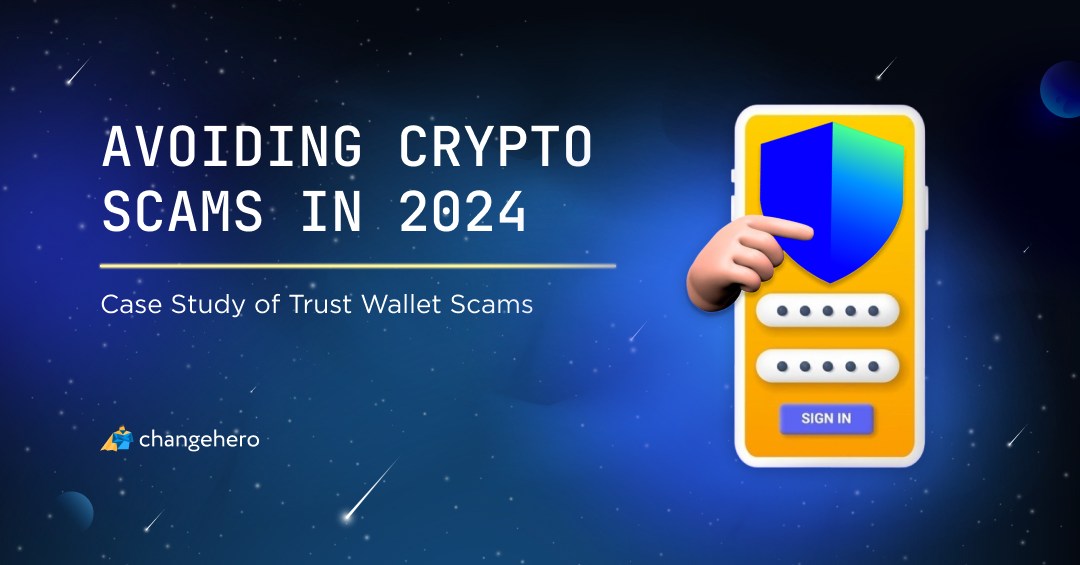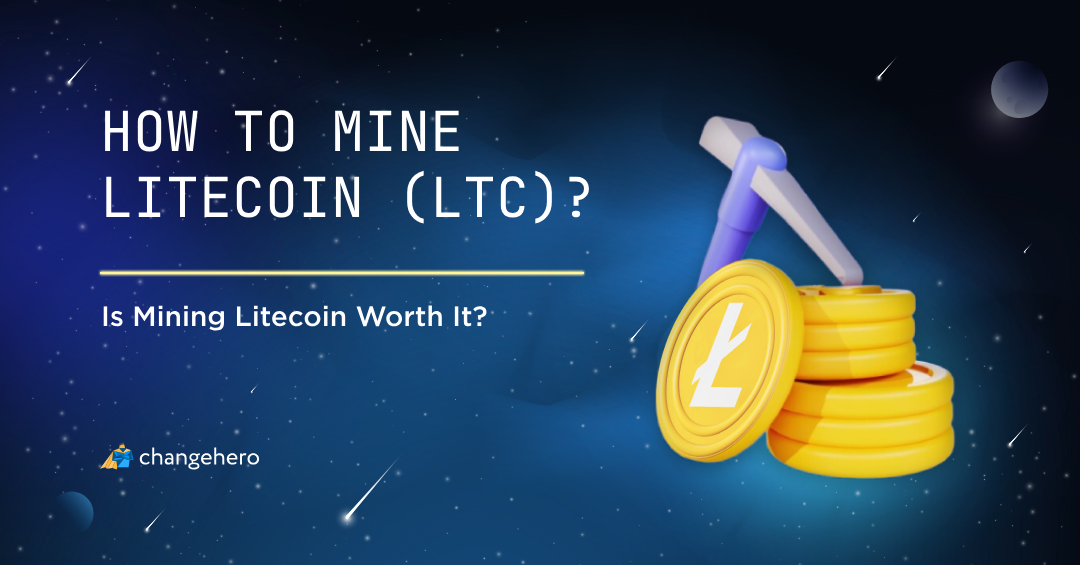Businesses that track the movement of capital across Ethereum and other chains are by now worth billions of dollars. The data that goes through any smart contract can reveal a lot about any crypto user, and the smart contract use is only on the rise. Blockchain researchers started trying to solve this issue of computational security and from their research Secret Network protocol came forth. Learn more about the significance of this project and its coin SCRT in our new guide!
Key Takeaways
- Secret Network is a platform that aims to solve the problems with computational security in the blockchain industry. It sports unique architecture to protect user data that goes through a smart contract;
- The network is a part of the Cosmos ecosystem, inheriting its cross-chain interoperability capabilities, Delegated Proof-of-Stake consensus mechanism, and CosmWasm smart contract platform;
- The native cryptocurrency of the protocol is called Secret (SCRT). It is necessary for network transaction fees, staking, and governance.
What is Secret Network and How Does It Work?
To understand what problems this blockchain project set out to solve, we must give a brief overview of the backdrop against which it emerged. By the 2020s, crypto has grown to encompass more than simple transfers of value: thanks to Ethereum, programmable money and decentralized applications (dApps) blew up, and the concept of Web3 (or Web 3.0) took shape. But still, the most frequently used decentralized platforms were pseudonymous and transparent. Tracking capital flows or even almost any action on the Ethereum platform is a profitable business. Privacy-protecting solutions covered only value transfers at best, and failed to include the full scope of actions on a smart contract platform.

This is where Secret Network steps in: a blockchain-based platform that focuses on privacy-preserving smart contracts. It gives developers the tools to create dApps with enhanced privacy features, allowing them to build secure and private applications without compromising data confidentiality.
Therefore, the main goal of Secret Network is to enable private computation and data privacy on public blockchains. To achieve this, it uses techniques that help perform computations on encrypted data without revealing the data itself.
One of the key components of the protocol is the Secret Contract, a type of smart contract that can process encrypted inputs and produce encrypted outputs. This way, sensitive data remains private throughout the entire process.
In addition to privacy, Secret Network also focuses on scalability and interoperability. It is built with the Cosmos SDK, which makes it interoperable with other blockchains in the Cosmos ecosystem. Developers can connect their applications to these blockchain networks and leverage their features and functionalities.
The Secret Network divides the protocol code into trusted and untrusted parts. The former is executed in a secure environment called Trusted Execution Environments (TEE), also commonly found in smartwatches and IoT devices. TEEs act like a “black box”, protecting the computed data from all parties except end users, provided they have the viewing keys. With these keys, Secret Network users can optionally disclose transaction details, making the network private by default, but optionally transparent.
Features of the Secret Network Protocol
Secret Contracts and Secret Nodes are two standout components of the Secret Network protocol.
Secret Contracts
As we mentioned, Secret Contracts are a type of smart contract on the Secret Network that allows developers to build dApps with enhanced privacy features. Unlike smart contracts, which execute on public blockchains and reveal the inputs and outputs of computations, these contracts help perform computations on encrypted data.
Sensitive data remains private throughout the entire process. Inputs are encrypted and computations are performed in a TEE environment, so no third party can access the raw data. The outputs of the computations are also encrypted, providing end-to-end privacy.
Secret Contracts are using the CosmWasm framework, which is a variant of the WebAssembly (Wasm) virtual machine designed for the Cosmos ecosystem. With it, developers can write smart contracts in familiar programming languages like Rust, making it easier to build and deploy applications on the Secret Network.
Secret Nodes
Secret Nodes are the backbone of the Secret Network. They are responsible for processing transactions, validating blocks, and maintaining the security and integrity of the network. These nodes are operated by validators who stake the native cryptocurrency of the network, Secret (SCRT), to participate in the consensus process.
The consensus algorithm of the Secret Network is called Tendermint, a variation of the Byzantine Fault Tolerant (BFT) consensus algorithm. It helps the network reach a consensus on the state of the blockchain and prevents malicious actors from compromising the network’s security.
Secret Network’s History and Team
Secret Network’s roots stem from an MIT project Enigma, founded in 2015 by a team of developers and researchers led by Guy Zyskind, Can Kisagun, and Tor Bair. Zyskind is the CEO and co-founder of Enigma. He has a background in computer science and has previously worked on projects related to blockchain and security. Bair is the Head of Growth and Marketing at Enigma. He has experience in marketing and business development in the blockchain space. Kisagun is the Chief Product Officer at Enigma. He has a background in finance and has previously worked on blockchain projects.
The Enigma project gained significant attention in 2017 when it raised $45 million in an Initial Coin Offering (ICO). However, in 2018, the project faced regulatory challenges from the U.S. Securities and Exchange Commission (SEC) regarding the ICO, which led to a settlement with the SEC. As part of the settlement, the Enigma team agreed to refund the ICO proceeds and register the tokens as securities.
Using the Enigma know-how, the community led an independent launch of Secret Network on the Cosmos platform. They facilitated the token migration and mainnet launch of the rehauled blockchain platform. The hard fork to secret-2 took place on September 15, 2020, and since then, the team and community added such features as Secret Contracts, bridges, and tokens.
What is SCRT crypto?
The design in which a decentralized network has a native token to incentivize maintenance and facilitate value transfer is one of the most common. Secret Network uses it as well, and its native cryptocurrency is called SCRT (pronounced “Secret”). In the case of SCRT, it acts as a utility and governance token of the network.

The initial supply that SCRT was released with is 170 million tokens. There is no hard cap on the total supply, in other words, the SCRT token is inflationary. Its inflation rate (7–20%) depends on the ratio of staked vs. unstaked SCRT in circulation.
How to Use Secret Coin?
There are a few most common use cases for the SCRT coin: governance, staking, and transaction fees.
SCRT can be staked by network participants to become validators or delegators on the Secret Network. Validators are responsible for processing transactions, validating blocks, and securing the network. Delegators, on the other hand, can delegate their SCRT tokens to validators, allowing them to participate in the consensus process and earn rewards. Staking SCRT helps to secure the network and maintain its integrity.
Validators are also able to participate in the governance of the Secret Network. They can propose and vote on proposals that impact the network, such as protocol upgrades, parameter changes, and funding. This decentralized governance model allows the community to have a say in the evolution of the network and ensures that decisions are made in a transparent and inclusive manner.
Finally, SCRT is used as the currency for paying transaction fees on the Secret Network. Whenever a user interacts with a Secret Contract or performs any action on the network, they are charged a fee in SCRT. Luckily, at the time of writing, the fees fluctuate between 0.002–0.2 SCRT (up to $0.054 currently). A transaction can refer to interaction with a contract, transfer, or exchange of assets, so fees would come up whether you delegate or unbond SCRT, send it to a bridge, or use dApps like Secret Tokens and Secret Finance.
Comparison with Similar Projects
Secret Network vs. Oasis Network
The problem the Secret Network tackles is not something that its team discovered: there have been other attempts to build privacy-oriented smart contract platforms. One of them is Oasis Network (ROSE).
Oasis Network focuses on secure computation for sensitive data in industries like finance and healthcare, while Secret Network targets privacy-preserving smart contracts in areas like DeFi and supply chain management. Both networks have their native tokens and aim to provide privacy solutions, but differ in their architectural approach and specific use cases.
Secret Network vs. Zcash
Zcash is a decentralized, privacy-focused cryptocurrency that uses zero-knowledge proofs called zk-SNARKs to enable private transactions. It allows users to selectively disclose transaction information, providing a high level of privacy and fungibility. It’s in the process of transitioning to a Proof-of-Stake consensus algorithm but for the time being, it is powered by Proof-of-Work.
PoW is arguably more secure in its cryptography and provides better privacy features than PoS-based algorithms. After all, providing consensus and verifying the integrity of a network while protecting validators’ data is a known challenge in PoS networks. Unlike Zcash or other privacy coins that aim for transactional privacy, Secret Network compromises on it in favor of computational privacy. The data on Secret Network validators is publicly verifiable since it is necessitated by the protocol.
Zcash embodies the “privacy on demand” approach, in contrast to the Secret’s “privacy by default”. Shielded addresses and transactions in Zcash are entirely optional.
Secret Network Ecosystem, Partners, and Future Plans

Secret Network always has been serious about growing its ecosystem and establishing partnerships to support its development and adoption. From grants to tools and libraries, there is plenty of support on all levels for the Secret Network community of developers. This has yielded results: on the infographic above, the listed apps are only a part of the whole Secret ecosystem, current or future.
The Secret Network ecosystem consists of projects and initiatives that contribute to its development and growth. This includes the Secret Foundation, which supports community development and awards grants, as well as the validators who secure the network and validate transactions.
Secret Network has formed partnerships with several prominent blockchain projects and organizations. Notable partnerships include collaborations with Chainlink oracle integration, and OCEAN Protocol, which allows Secret Network to access and monetize private data in a decentralized manner.
Furthermore, as a part of the forays into interoperability, Secret Network has developed a bridge to connect with Ethereum. The Secret Ethereum Bridge (SEB) lets users move assets between Secret and Ethereum, expanding the usability and liquidity of Secret Network’s native assets. The SCRT Labs plans to expand the interaction between the networks by developing Secret Ethereum, an initiative that will help developers transfer and keep data securely on Secret. The SEB and Binance Smart Chain bridges are also to be phased out in favor of on-chain applications.
More global updates, as a part of a Secret 2.0 upgrade, are something that is on the horizon but not within concrete time frames. Currently, it is best thought of as planned major future updates, and includes reinforcing privacy with cryptography: fully homomorphic encryption, Privacy-as-a-Service chains, zero-knowledge proofs, and multi-party computation. This will not only strengthen the privacy-preserving properties of Secret Network but also help extend them to more blockchains.
Which Crypto Wallet to Use for Secret Coin?
If you want to use the Secret Network with its features and supported apps to the fullest extent, using official or officially recommended applications is the best option. They include Keplr (Web app, mobile), Citadel.One (browser, mobile), Leap Wallet (desktop, mobile), and Fina Wallet (mobile).
All of the above are software or hot wallets. For even more secure storage, you can opt for a cold hardware wallet. One of the popular options is Ledger — its Secret Network integration by Ping.pub lets you keep SCRT safely offline.
Where to Buy Secret Network (SCRT)?
The answer is easy: exchange crypto for SCRT on ChangeHero. We will find the best rate across ten liquidity providers in real-time, and you can start right away with no need to sign up.
- Choose the currencies on the home page, amounts, and the type of exchange. Provide your SCRT wallet address in the next step and check the details;
- Double-check the provided information, read and accept the Terms of Use and Privacy Policy;
- Send the cryptocurrency for the swap in a single transaction. In a Fixed Rate transaction, you have 15 minutes before it expires;
- Sit back and relax. Now we are doing all the work: checking the incoming transaction and making the exchange as soon as it arrives;
- As soon as the exchange has been processed, your SCRT is on its way to your wallet. And so, the transaction is finished!
The flow is as easy as it gets but if you struggle with something, don’t worry. Our support team is available 24/7 to help you in the chat or through the email: [email protected].
Conclusion
Secret Network comes at a time when users have both the need for Web3 services and protection from online surveillance. Even though today crypto users at large opt for convenience over privacy, as the concern grows, it is great to have an option like Secret Network.
If you found this guide useful, make sure to check out our blog for coverage of other crypto projects. Subscribe to our social media for updates: Telegram, X (Twitter), Facebook, and Reddit.
Frequently Asked Questions
What is the Secret Network?
Secret Network is a blockchain-based platform with a focus on privacy-preserving smart contracts. It gives developers the tools to build secure and private decentralized applications that don’t compromise data confidentiality.
What is the Secret Network built on?
Secret Network operates on the Cosmos blockchain platform. It can interact with other chains in the Cosmos ecosystem and uses its Tendermint BFT consensus algorithm and CosmWasm virtual machine.
Is Secret Network private?
Secret Network is a public blockchain and is not a privacy coin in the most direct sense of the term. It protects smart contract computations rather than transfers between addresses. Users can make assets on the Secret Network (including SCRT) private by wrapping them with the Secret Tokens contract.








